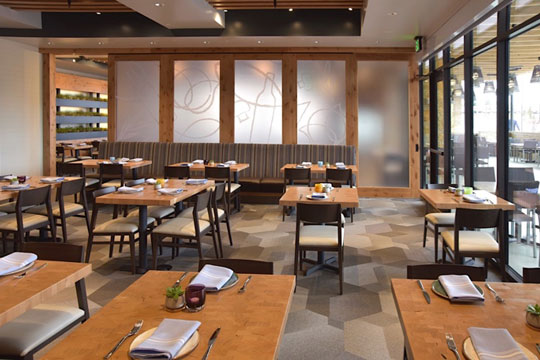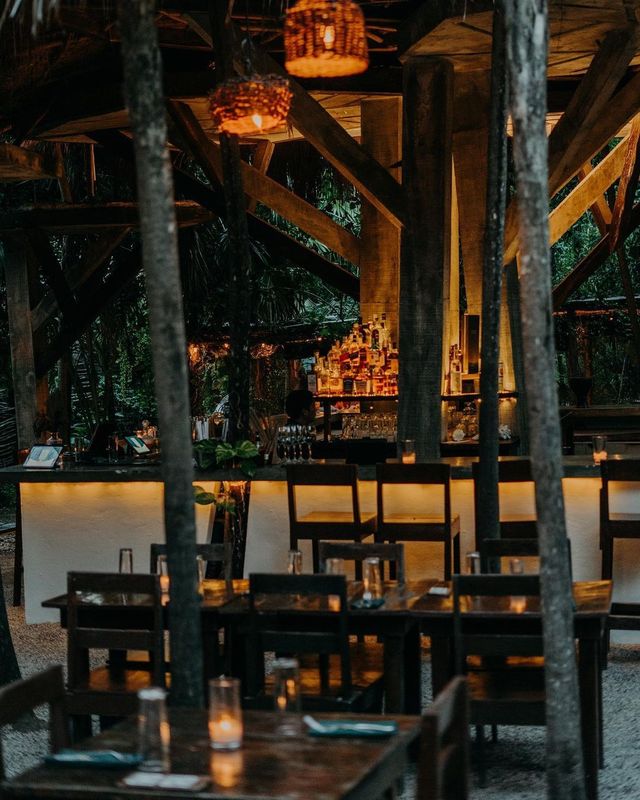Asian Fusion Restaurant: An Unique Dining Experience in the Heart of Islamabad
Asian Fusion Restaurant: An Unique Dining Experience in the Heart of Islamabad
Blog Article
Savor Genuine Oriental Food With a Pan-Asian Twist for a Cooking Experience
Embarking on a cooking journey with authentic Eastern food, improved with a Pan-Asian twist, uses a distinct possibility to explore the rich tapestry of tastes that specify the region's diverse culinary traditions. As you contemplate these tempting recipes, consider the cultural narratives and historical impacts that shape them, each bite providing a story waiting to be found. Chinese food Islamabad.

Discovering Pan-Asian Tastes
In the realm of global gastronomy, Pan-Asian food sticks out for its amazing diversity and the unified interaction of tastes from different Eastern cultures. This cooking approach commemorates the abundant customs and unique ingredients discovered throughout the continent, producing a tapestry of preferences that is both appealing and rewarding. Trick to Pan-Asian food is its capability to balance different tastes-- pleasant, salty, spicy, and sour-- while highlighting the quality and quality of each ingredient.
From the umami-rich soy sauce of Japan to the intense chili peppers of Thailand, Pan-Asian cuisine offers an extensive palette of tastes. These components are commonly combined in innovative means, enhancing meals with layers of intricacy. As an example, using aromatic herbs such as lemongrass and cilantro, common in Vietnamese and Thai food, adds a revitalizing illumination to meals, while the unification of coconut milk delivers a creamy, abundant texture.
The emphasis on fresh fruit and vegetables and aromatic spices makes certain that each dish is not just a feast for the preference buds yet likewise for the detects. Pan-Asian food invites diners to start a culinary journey, exploring the huge and varied landscapes of Eastern gastronomy with every bite.
Fusion Meals to Try
While Pan-Asian food is celebrated for its standard tastes, the modern cooking landscape is increasingly accepting blend dishes that mix these classic aspects with impacts from various other regions. This cutting-edge approach not just honors the abundant heritage of Asian culinary arts but likewise presents novel preference experiences that interest contemporary tastes.
An archetype of such a blend recipe is the Korean-Mexican taco, where marinaded bulgogi beef is wrapped in a cozy tortilla, covered with kimchi and a hot gochujang-infused salsa. This mix marries the strong, savory flavors of Korea with the lively, fresh aspects of Mexican food. Likewise, sushi burritos have gotten appeal, amalgamating the delicate artistry of Japanese sushi with the hearty, hand-held benefit of a burrito, commonly featuring fusion components like tempura shrimp and avocado with a drizzle of wasabi mayo.
One more noteworthy dish is Thai curry ramen, which instills the creamy, fragrant flavors of Thai curry into the soothing brew of traditional Japanese ramen, creating a harmonious blend that tantalizes the detects. These blend meals extend past plain uniqueness; they stand for a culinary dialogue in between societies, motivating exploration and innovation in the globe of Pan-Asian food.
Essential Components and Spices
To absolutely value Pan-Asian cuisine, one must understand the vital components and spices that develop its foundation. This varied culinary style draws from a rich tapestry of Oriental traditions, using a harmonious blend of appearances and tastes. Key components include soy sauce, fish sauce, and oyster sauce, which give a tasty umami depth essential to Asian meals. Complementary to these are rice vinegar and mirin, offering a fragile acidity and sweetness.
Fragrant elements are pivotal, with garlic, ginger, and lemongrass being ubiquitous throughout numerous Pan-Asian recipes. These components give a great smelling base that enhances the intricacy of flavors. Spices such as star anise, cardamom, and cinnamon introduce heat and character, resembling impacts from regions like China and India.

Food Preparation Methods and Tips
Grasping the art of Pan-Asian food calls for knowledge with its unique cooking methods, each contributing to the dynamic tapestry of flavors this culinary practice is commemorated for. Central to these approaches is the stir-fry, a rapid cooking strategy that preserves the dietary integrity and brilliant colors of components. Using a wok, the stir-fry approach enables even heat circulation, important for attaining the characteristic texture and taste equilibrium of Pan-Asian dishes.
An additional basic method is steaming, specifically common in Chinese cuisine. This gentle method preserves the all-natural tastes and nutrients of components, making it ideal for fish and shellfish and vegetables. Dumplings, a beloved staple, commonly take advantage of steaming, leading to soft, delicious structures.
Grilling, additionally integral, gives smoky midsts to recipes such as Oriental bulgogi or Japanese yakitori (asian restaurant isb). This method commonly includes marinading components, allowing tastes to pass through deeply before cooking over an open flame or warmer
Lastly, understanding the art of balancing flavors-- pleasant, sour, salty, bitter, and umami-- is vital. Correctly layering these aspects can boost a recipe from ordinary to remarkable, providing a complicated and pleasing cooking experience that personifies the essence of Pan-Asian food.
Dining Experiences Worldwide
Around the world, Pan-Asian food supplies an exceptional dining experience, commemorated for its rich tapestry of tastes and dynamic presentations. This culinary sensation has actually gone beyond cultural borders, recording the hearts and palates of food enthusiasts worldwide. In cosmopolitan cities like New York, London, and Sydney, Pan-Asian dining establishments function as melting pots where culinary traditions from Thailand, Japan, China, and beyond converge, offering diners with an eclectic mix of recipes that highlight the area's variety.
The international charm of Pan-Asian food hinges on its ability to provide both credibility and innovation. Cooks skillfully wed conventional components such as lemongrass, soy sauce, and miso with contemporary techniques, causing dishes Continue that are both refreshingly brand-new and acquainted. This fusion enables diners to start a culinary journey that values heritage while embracing modernity.
Moreover, dining experiences are advice raised with attentively developed atmospheres that show the principles of Pan-Asian looks. From minimalist Japanese-inspired interiors to vibrant Thai-themed spaces, each restaurant uses an unique ambiance that enhances the cooking offerings. Therefore, customers are not just consuming a meal but partaking in a cultural experience, making Pan-Asian dining a really global phenomenon.
Conclusion
The exploration of Pan-Asian cuisine uses an extensive understanding of the elaborate interaction of tastes and culinary practices across Asia. By accepting fusion recipes such as Thai curry ramen and sushi burritos, the cooking journey not just highlights the flexibility of traditional active ingredients but likewise showcases innovative modern-day strategies. This gastronomic journey, enhanced by cooking approaches and vital flavors, gives a distinct chance to value the multiculturalism and culinary artistry that specify Pan-Asian food on a global range.
Beginning on a culinary trip via authentic Asian food, boosted with a Pan-Asian spin, offers an one-of-a-kind chance to check out the abundant tapestry of flavors that specify the area's varied culinary traditions.In the world of international gastronomy, Pan-Asian cuisine stands out for its impressive diversity and the harmonious interaction of tastes from different Oriental societies. Secret to Pan-Asian food is its capability to stabilize different tastes-- sweet, salty, spicy, and sour-- while highlighting the quality and high quality of each component.

Report this page